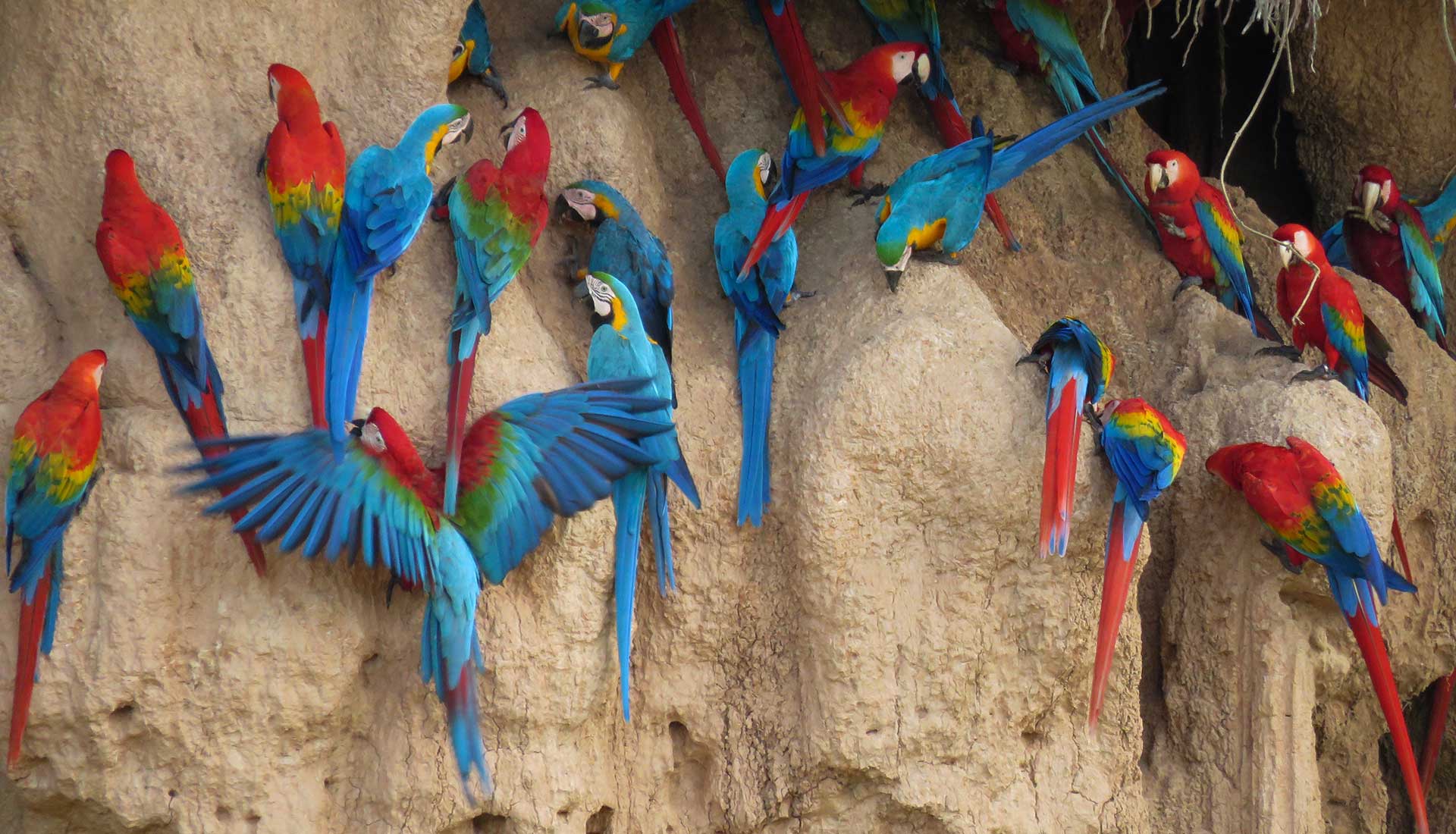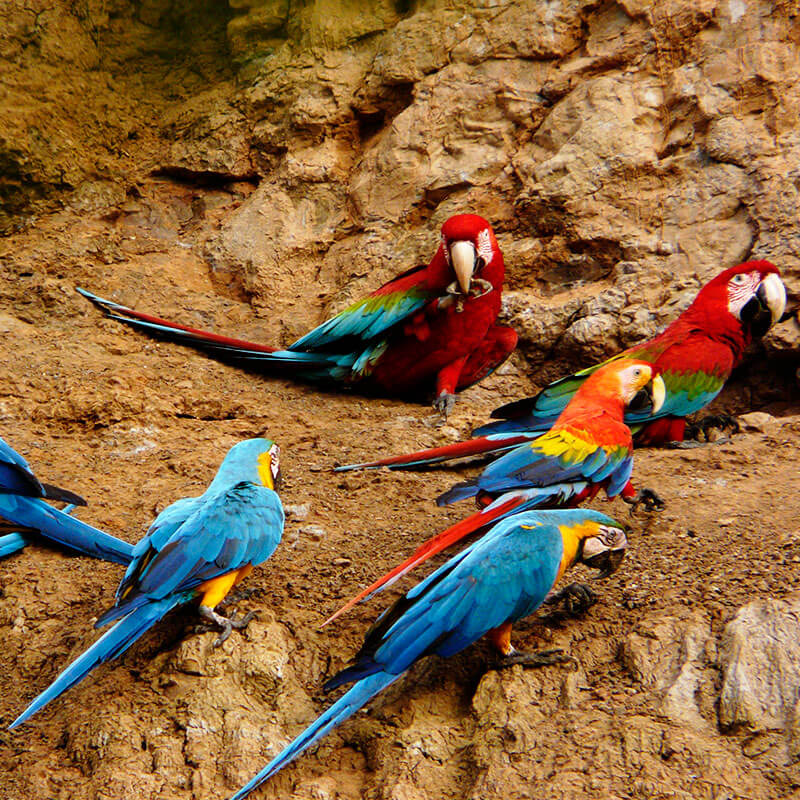Tambopata clay lick and macaws
There are three species of large macaws that are frequently seen in the Tambopata clay licks: the scarlet macaw (Ara macao), the blue and yellow macaw (Ara ararauna) and the red and green macaw (Ara chloropterus).
All three are majestic seed dispersers and, therefore, inhabitants of superlative importance to the health of Amazonian forests.
(Without their disciplined work as seed carriers everywhere, the forests would lose their largest trees and the collapse of these extraordinary ecosystems so vital to Gaia would be imminent).
I forgot: macaws are left-handed by nature. They all use their left paw to manipulate the seeds and fruits they feed on while deftly grasping them with their right.
They are monogamous, long-lived -they can live more than fifty years-, noisy and sometimes hybridize with each other to create individuals -not species- with phosphorescent plumage.



